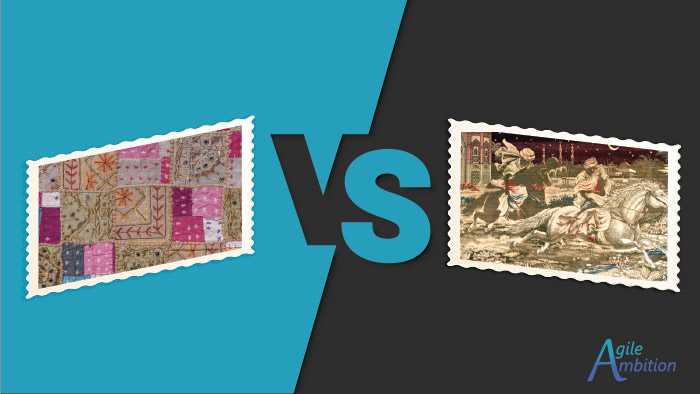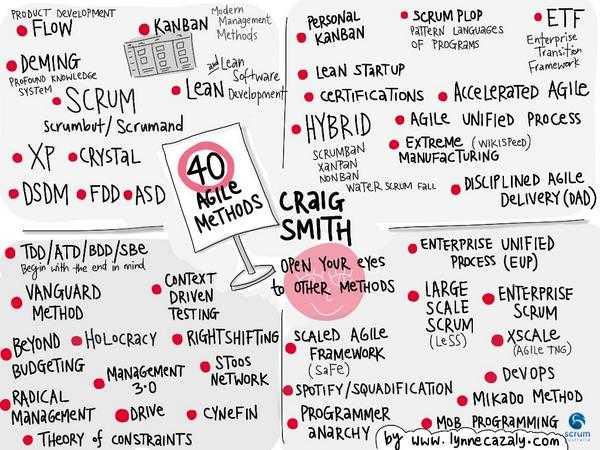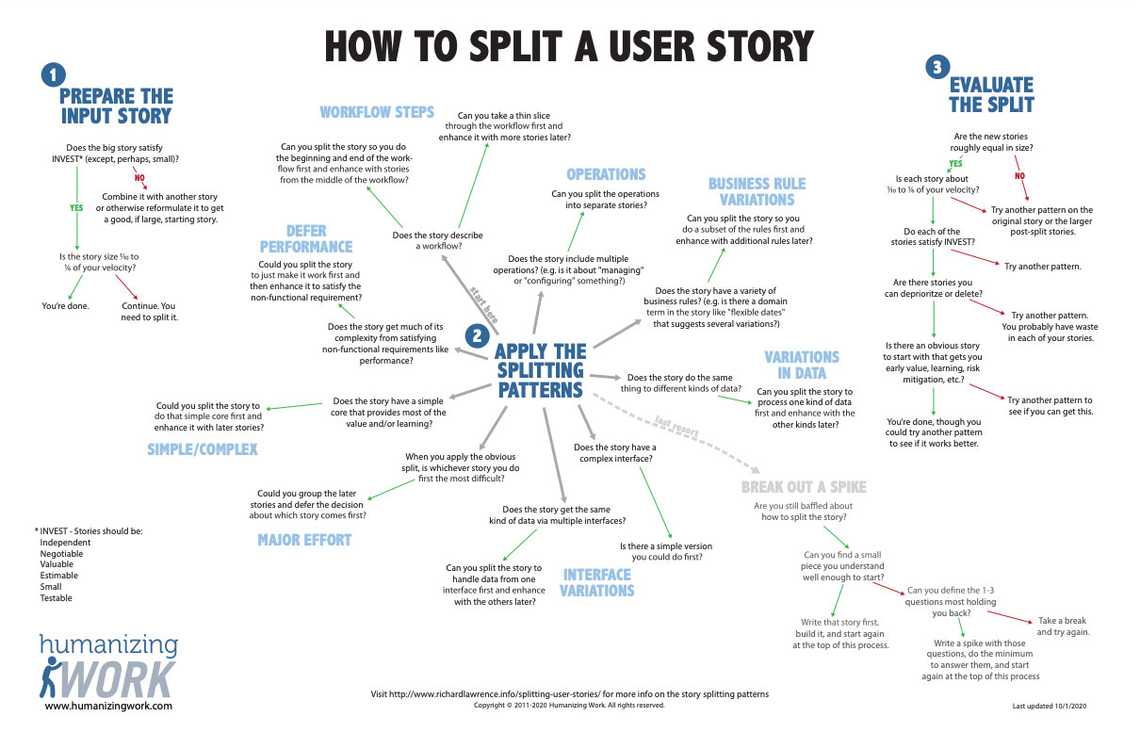ICAgile Certification Review: ICP-APO

Were you thinking about snagging one of the IC Agile certifications? Proceed with caution; mileage may vary.
Why IC Agile?
I’m addicted to learning. I find joy in creating connections between two unrelated pieces of information. Making connections in information is like placing the correct puzzle piece.
Creating and following a plan also brings me joy. I’m cool if the strategy needs to change along the way, but I like checking things off and seeing the progress I’ve made.
Given these facts, it should come as no surprise that the ICAgile certifications grabbed my attention.
At the time of writing this article, ICAgile offers thirty-one agile flavored certifications. ICAgile divides the courses into two learning roadmaps: Business Agility and Agile Delivery.
The topics tackled have some variety that you don’t see with other agile certifications. For instance, ICAgile has a track dedicate to agile testing. I’m a creature of habit, but even I enjoy a little variety.
Why ICP-APO?
My new position as a Technical Program Manager mixes the responsibilities of the Product Owner and Scrum Master. I’ve supported and backfilled Product Owner roles, but never as my primary focus. I hoped that knowledge gained from ICP-APO certification would be a jumpstart for my new role.
The zealot in me wants to say the Product Owner and Scrum Master are two separate roles that shall never merge. Reality and what should be are often two circles that don’t overlap. In my recent job search, I found that several of the higher-end positions combined these responsibilities. I felt if I wanted to further my career, I needed to step outside my comfort zone.
Advancing knowledge of the Product Owner role is a benefit even for a pure Scrum Master. The more you know about any position you support, the more help you can offer.
My Experience with the ICP-APO
In retrospect, the whole adventure from beginning to end was a little unusual.
Early-bird pricing was still listed for the course even though the cut-off date had passed. My good fortune overshadowed this first hint of what was to come.

The day before my course was to begin, a representative for the training company contacted me. Due to some shifting of corporate registrations, I was the only student left in my course. The representative presented me with some options. I could move forward with my existing registration or attend a different instance of the same class.
If I kept my existing registration, it would become a one-on-one coaching session. The introvert in me needed no time to think this over. I’d much prefer to take part in a larger class.
The representative informed me the alternative class was guaranteed to run. She also alluded that my original event had included a (presumably decent-sized) corporate group. From there, I assumed that this other instance must have more than one student registered. On day one, I was a bit surprised when only three people (including myself) joined the Zoom meeting. Keep in mind, one of the three attendees was the actual trainer.
The learning experience itself is about what you’d expect based on the story so far. I can’t say for sure, but there is a chance that having only two students in the class was a factor that affected the teaching style. We oscillated between reading from slides and having an open discussion.
Open conversation works better when you’re discussing topics already covered in the course. At times I felt like the trainer asked our opinion on concepts we’d not yet learned.
What are my thoughts on stakeholder management? My thoughts are Gee, and I wish I were taking a course to learn more about stakeholder management.
I am open to learning from others in all aspects of life. I can also see the benefits of having an open, collaborative discussion in a classroom. However, when I pay for a course, I expect an expert to provide most of the training. A significant portion of this class consisted of open discussion. It gave the vibe of the blind leading the blind.
Speaking of weird vibes, there were more. People who were not participating in the class would pop in from time to time. They never spoke. The trainer would pause for a brief second while he sent them to a breakout room.
The slides used in class were rudimentary with inconsistent theming —content from industry influencers made up at least forty percent of the material. The presentation always referenced the sources, so at least there’s that. The result was akin to a scrappy patchwork quilt. We had blocks of other people’s opinions on the topics. A well-made course should strive to weave information into a consistent story thread.

I cannot say I’m surprised at never receiving access to the recordings and documents promised during the class. This lack of follow-through is one more example of quality issues with the class.
My intention isn’t to feed a fed horse but rather to point out what you risk by not vetting your training provider. These types of training aren’t cheap. Trust your instinct and be wary of red flags early in the process if you wish to get what you pay for.
The Thumper Principle
Thumper recollects advice his father gave him:
“If you can’t say something nice, don’t say nothing at all.”
In the spirit of this principle, the nicest things I can say about the course are things I learned. I was more familiar with the covered topics than expected, but even a know-it-all can learn something new.
Another Shocking List of Agile methods
I love the chaotic visualizations people create for the litany of agile concepts. It’s refreshing when a picture like this reminds me of the complexity of the space I work in.

It’s easy to get bogged down in the challenges of the day-to-day job. Imposter syndrome starts to creep in, and one begins to wonder if they’ve lost their touch. Then I see something like this that reminds me that this complicated landscape is challenging for everyone to navigate.
As a continuous learner, I’m also excited that I’ll never run out of different concepts to explore. Visuals like these never fail to provide some new or exciting topic.
I’m not sure that the label ‘agile method’ is correct for each listed concept, but let’s not delve into that argument.
PMI Acquired DA
My instructor let this tidbit of information slip while covering another topic.
I only have a vague familiarity with Disciplined Agile. It was one of the agile flavors covered in the PMI-ACP.
The news struck me as curious from a couple of different perspectives:
- The PMI’s interest in anything agile always piques my curiosity. Most PMP possessing project managers I’ve met sneer in the general direction of anything labeled agile. What could they be up to?
- The idea that one agile approach could buy another agile approach is preposterous. Sometimes I conflate the PMI with traditional project management. I forget that a lot of these ‘methods’ have companies supporting them. My motivations (helping teams) do not always align with a company’s motivation (to make a buck). It can be helpful not to lose sight of this fact.
Epic Hypothesis Statement
SAFe’s version of the epic hypothesis statement provides a helpful way of communicating the value of a product. My excellent SAFe instructor also covered this in my SAFe Scrum Master course that I took earlier this year.
I share it here not because it’s new but because it provides considerable value. The template for describing a product is a great thinking tool that is simple to use.
For [target customer]
Who [statement of need or opportunity]
The [product name] is a [product category]
That [key benefit or reason to buy]
Unlike [primary competitive alternative]
Our Product [statement of primary differentiation]
Impact and Effort Matrix
When prioritizing work, weighing effort against value seemed like a logical approach. I was unaware that there is a thinking tool based on this exact method.
I’ll share the same video that we watched in class. It does a pretty good job of explaining the concepts.
DEEP Backlog
Who doesn’t need another acronym? I know I sure feel like I don’t have enough acronyms in my life.
DEEP is a new one for me. Its purpose is to help you remember the qualities of a healthy backlog.
- (D)etailed Appropriately
- (E)stimated
- (E)mergent
- (P)rioritized
I recommend checking out Roman Pichler’s article on it for more information.
A Flowchart for Story Splitting
I’ve read Fifty Quick Ideas To Improve Your User Stories. I’m also familiar with Mike Cohn’s creepy crawly acronym to remember the main approaches.
Richard Lawrence’s flowchart is in the same vein as those resources.

It might be helpful to share this with your team. The next time they’re tackling an elephant, this might help break it into smaller bites.
Due Diligence
My number one takeaway from this experience is to be more skeptical of certification courses. I wouldn’t say the class was a total waste, but many topics offered no new value for me. Researching specific gaps in my knowledge would have been a better expenditure of my time.
More to the point, I will put more effort into evaluating future trainers before I sign up for a course.
My Recommendation
If I could have a do-over, I would do one of two things:
- Save my money toward a more expensive course taught by an industry influencer I already trust
- Use the learning objects as a guide for self-taught learning
The Expert Alternative
The $600 I spent on this class would have been more than a third of what it would cost to take a course with Roman Pichler.
I’ve read several of his blog posts, listened to his podcasts, and plan to read a couple of his books. Through his free content, I’ve been able to validate that I find his teaching style valuable.
If I pay for courses in the future, this is the direction I intend to go. Find someone already established as an expert, and take one of their courses. A trainer first approach is more logical than a certification first approach.
The DIY Alternative
The ICAgile learning objectives are valuable, but you can obtain those from the website at no cost.
When I was a kid, I always read the book to the video game on the way home from the rental store. Even as an adult, I read the instruction manual when we buy a new lawnmower.

I know; it sounds lame. The fact is that these books contain information the experts defined as essential. Starting with what the experts have said I should know has saved me countless hours (or injuries) trying to figure it out as I go.
Start with a list of learning objectives for any agile certification. Perform the necessary research to obtain the required knowledge. You won’t have the piece of paper that indicates you took the course, but odds are the knowledge you gain will not be easily forgotten.
My recommendation is dependent on whether you must possess the official certification. If so, only take courses from individuals you can validate as experts via their free content. If not, follow a self-learning path that uses industry-recognized learning objectives as your guide.
Works Consulted
- Business Agility Learning Roadmap
- Agile Delivery Learning Roadmap
- Agile Testing
- Project Management Institute Announces Acquisition of Disciplined Agile
- PMI-ACP Retrospective
- Epic Hypothesis Statement
- SAFe Scrum Master: 13 Unexpected Takeaways
- Make The Product Backlog Deep
- Fifty Quick Ideas To Improve Your User Stories
- Split Stories Using SPIDR
- The Humanizing Work Guide to Splitting User Stories
- Roman Pichler’s Upcoming Training Courses
TLDR
Its trainer determines a course’s value. If you want to maximize the mileage you get from a class, verify that your trainer is high octane.
Share
Table Of Contents
Buy Me a Coffee
Are you gaining value and insights from Agile Ambition? If you love what you're learning and want to see more, here's a simple way to show your support. Click the "Buy Me a Coffee" button to make a small donation. Each coffee you buy fuels our journey to discover better ways of working by unpuzzling Agile, one piece at a time.
Buy Me a CoffeeRelated Posts
Quick Links
Legal Stuff

